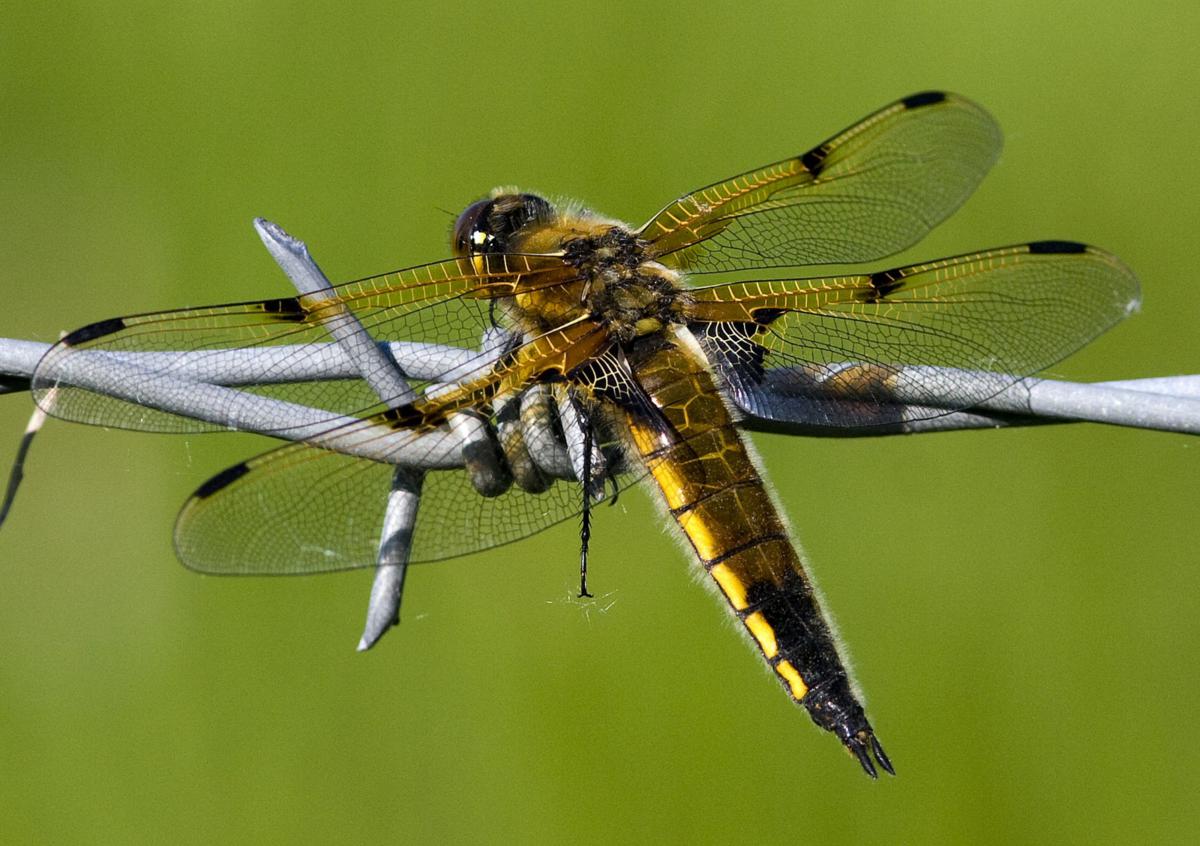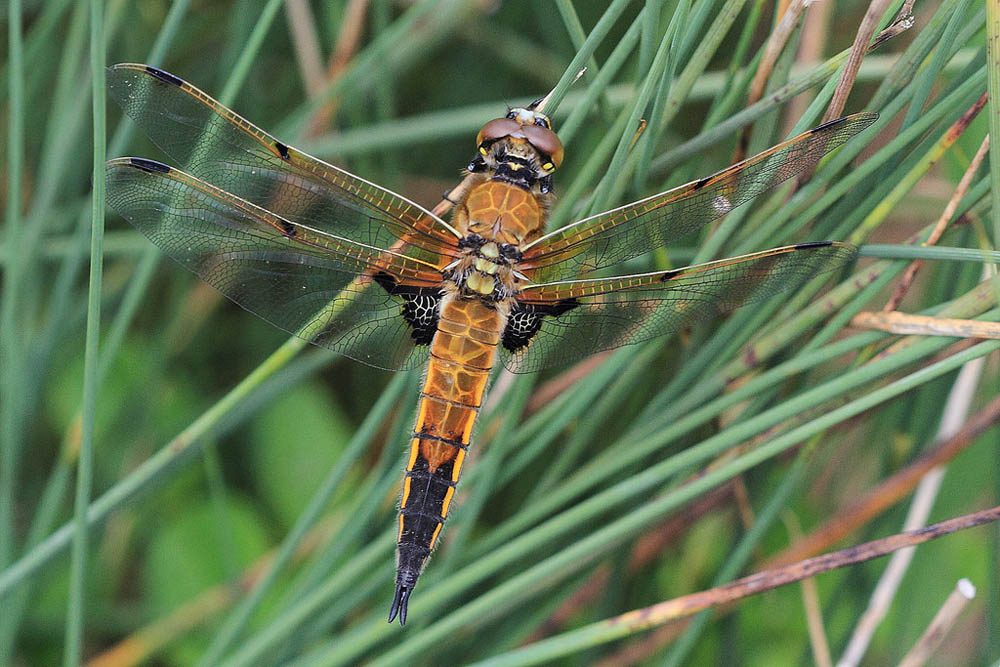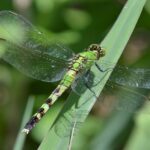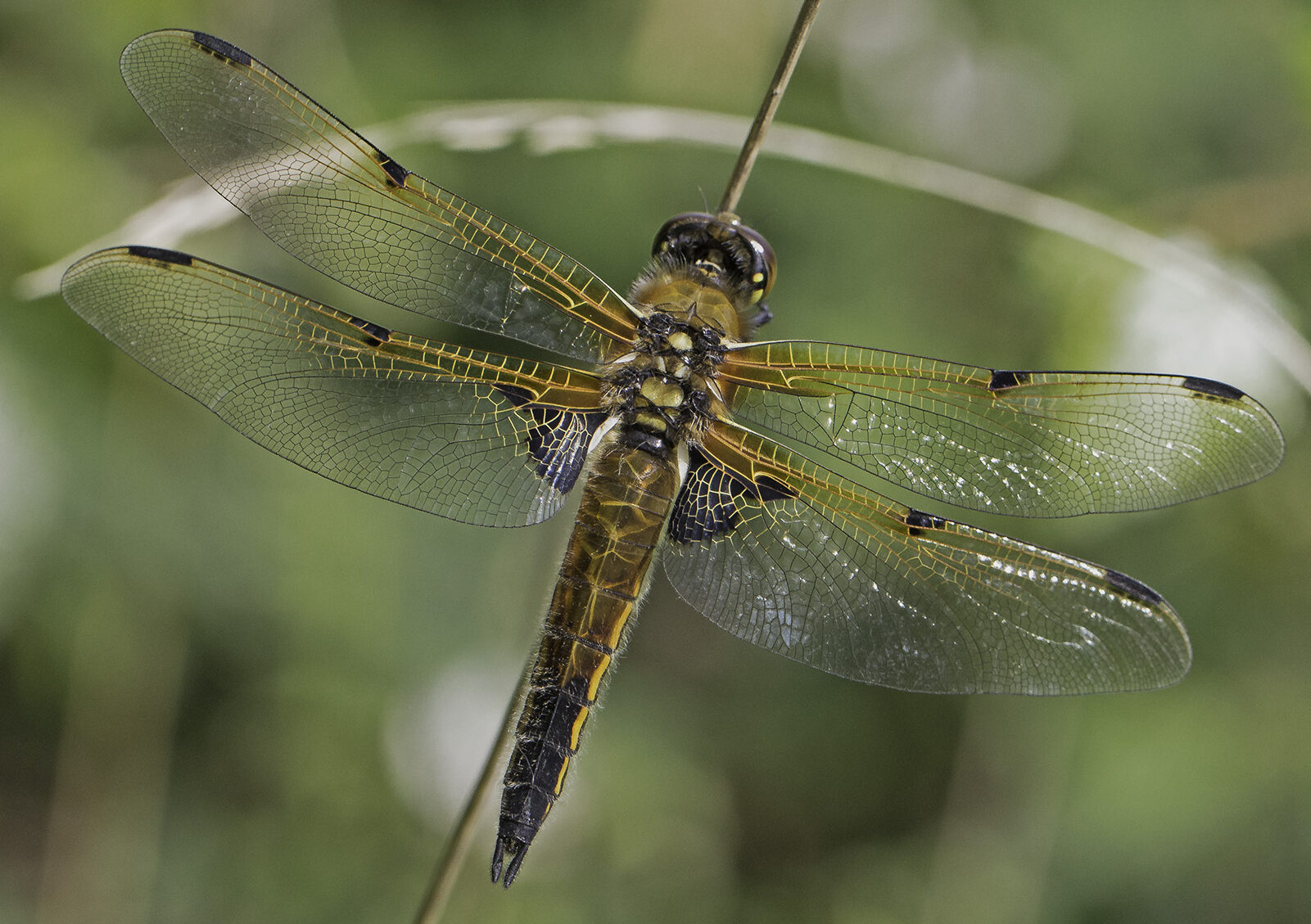
What is a four spotted chaser?
The Four-spotted chaser is a medium-sized, fairly broad-bodied dragonfly. It is on the wing from May to September, sometimes even into October. It is commonly found on heathland and moorland, as well as around ponds, lakes and in woods. Four-spotted Chasers are active dragonflies, spending a lot of time hawking over water for insect-prey or to mark out their territories. They mate on the wing; the female then hovers over the water, dipping the tip of her abdomen into drop her eggs on to vegetation below the surface.
How to identify
Both sexes of the Four-spotted chaser are golden-brown, getting darker towards the tip of the body, and with yellow spots along the sides. Two dark spots at the front edge of each wing give this dragonfly its name and an easily recognisable appearance.
Habitat
This active dragonfly mainly lives by ponds, vernal pools, and slow flowing rivers; they are most common in June and July.
It prefers well-vegetated water with lots of submerged and emergent plants.
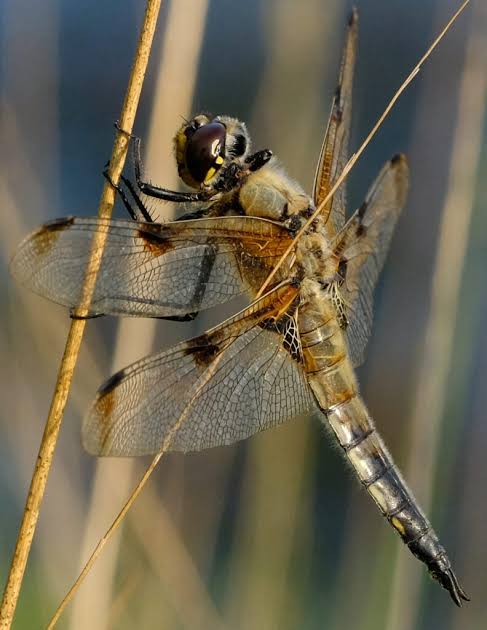
Four-spotted chaser is a common dragonfly species with two black spots in each wing. The colouring varies from dark brown to brownish yellow and turns gray with age. The species is medium in size and grows to 40 – 50 mm in length.
Four-spotted chaser is found in all kinds of waterways, especially in slow-flowing and standing lush lakes and ponds. Prevalence area covers Europe, Asia and North America.
The species is often characterized by stopping between the flight, so it is easily recognizable and is one of our most widely spread dragonflies. Four-spotted chaser may meet up to hundreds of individuals in the same place at the same time. Flight time is from May to August and is one of the first dragonflies in the spring.
As a common basic species of our forests, the four-spotted chaser does not require special protection measures. By leaving untouched buffer zones around waters, biodiversity linked to waterways and their near surroundings can be promoted.
When to see it
It flies from mid May to mid August.
Life History
Sexually active males are highly territorial and select a prominent perch over-looking the water to look for females, other males and prey. Females perch away from water to avoid harrassment by the males, only venturing to the water when they are ready to deposit eggs. This is a wandering species and may migrate long distances.
UK Status
Widespread throughout Britain, though slightly scarcer in northern England.
VC55 Status
Because of its specific habitat requirements this is another species with a rather local and scattered distribution within Leicestershire and Rutland.
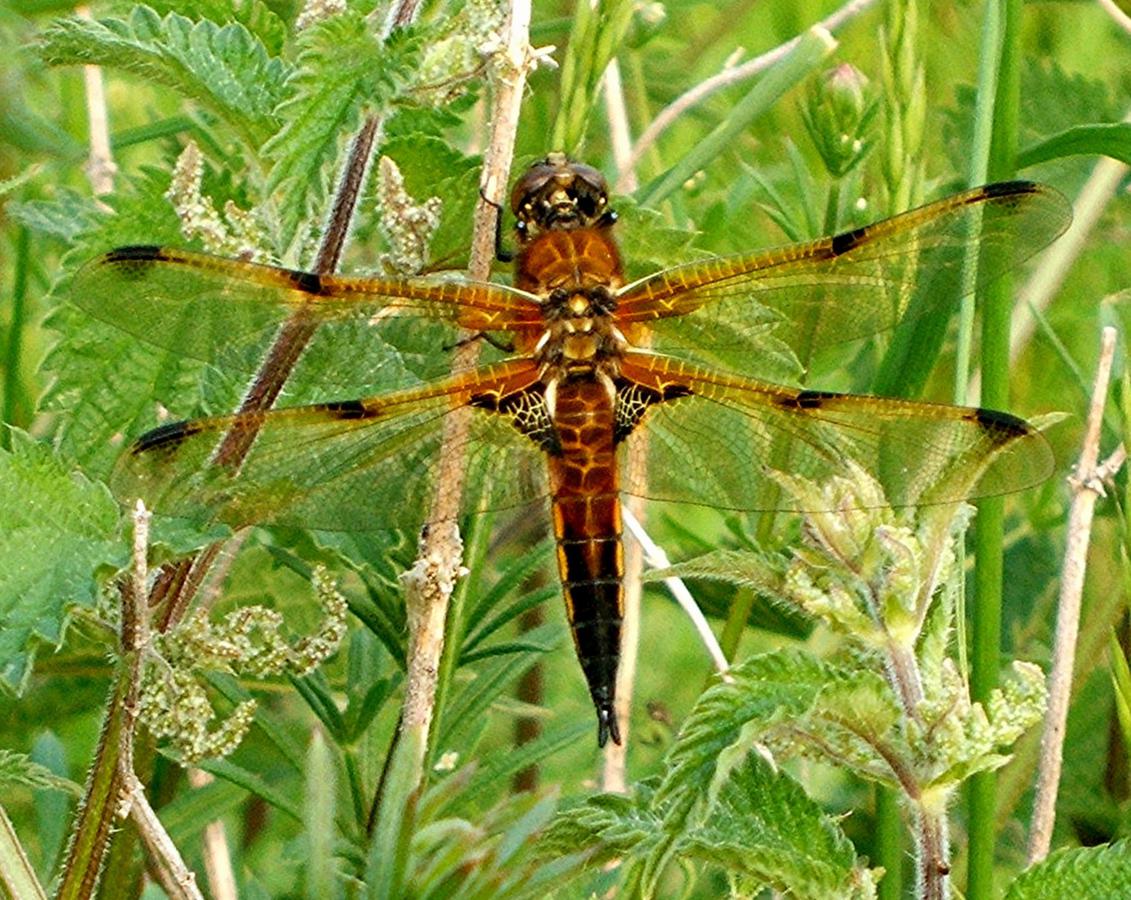
Further Information
This species favours well-vegetated water bodies with an abundance of submerged and emergent vegetation. Such a specific habitat preference means that the Four-spotted Chaser is another species with a rather local and scattered distribution within VC 55. It breeds in suitable ponds, pools, lakes, canals and occasionally slow-flowing rivers. Reference to historic records suggests that this species has increased in its abundance in recent years, particularly since the 1980s; prior to this period it had been recorded from very few sites.
Four-spotted Chaser
The four-spotted chaser is a medium-sized, fairly broad-bodied dragonfly. It is on the wing from the end of May to August and is commonly found on heathland and moorland as well as around ponds, lakes and in woods. Four-spotted chasers are active dragonflies, spending a lot of time hawking over water for insect-prey or to mark out their territories. They mate on the wing and then the female hovers over the water, dipping the tip of her abdomen in, and drops her eggs on to vegetation below the surface.
Both sexes of the four-spotted chaser are golden-brown, getting darker towards the tip of the body and with yellow spots along the sides. Two dark spots at the front edge of each wing give this dragonfly its name and an easily recognisable appearance.
